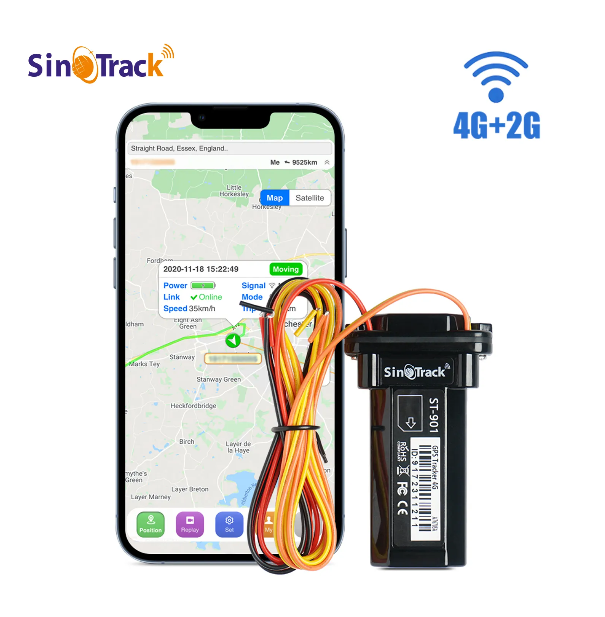Comprensión de la tecnología moderna de rastreo GPS para mascotas
La evolución de la tecnología de rastreo para mascotas ha transformado la forma en que cuidamos y protegemos a nuestros queridos compañeros animales. Mascota Los rastreadores GPS se han vuelto cada vez más sofisticados, ofreciendo a los dueños de mascotas una tranquilidad sin precedentes y capacidades de monitoreo de ubicación en tiempo real. Estos dispositivos compactos combinan tecnología satelital avanzada con interfaces fáciles de usar para mantener a nuestras mascotas seguras y localizadas en todo momento.
Los rastreadores GPS para mascotas de hoy hacen más que simplemente localizar la posición; ofrecen un conjunto completo de funciones que incluyen el seguimiento de actividad, monitoreo de salud e incluso funciones de cerca virtual. A medida que más dueños de mascotas adoptan esta tecnología, comprender cómo instalar y utilizar correctamente estos dispositivos resulta fundamental para maximizar su eficacia y garantizar la seguridad de nuestras mascotas.
Componentes esenciales de los sistemas de rastreo GPS para mascotas
Elementos de hardware y características del dispositivo
La base de cualquier rastreador GPS para mascotas radica en sus componentes físicos. Los dispositivos modernos suelen incluir una carcasa resistente y resistente al agua que aloja el módulo GPS, los componentes de conectividad celular y una batería de larga duración. El mecanismo de sujeción, normalmente en forma de clip para collar o funda para collar, está diseñado para ser seguro y, al mismo tiempo, cómodo para que su mascota lo lleve puesto de forma continua.
Los modelos avanzados suelen incorporar sensores adicionales para monitorear signos vitales, temperatura y niveles de actividad. Estos componentes trabajan juntos de forma perfecta para ofrecer una imagen completa de la ubicación y el bienestar de tu mascota. El tamaño y peso del dispositivo están cuidadosamente calibrados para garantizar que sean adecuados para diferentes tamaños de mascotas, desde gatos pequeños hasta perros grandes.
Requisitos de software y conectividad
El aspecto de software de los rastreadores GPS para mascotas es igual de importante que el hardware. La mayoría de los rastreadores modernos incluyen aplicaciones móviles dedicadas que sirven como centro de control para todas las funciones de seguimiento. Estas aplicaciones requieren una conexión a internet estable y suelen utilizar redes GPS y celulares para mantener una comunicación constante con el dispositivo de rastreo.
Muchos sistemas también ofrecen almacenamiento en la nube para datos históricos de ubicación, lo que permite a los dueños de mascotas revisar los movimientos de sus animales con el tiempo. Las plataformas de software suelen incluir funciones como configuraciones personalizadas de alertas, gestión de múltiples dispositivos y la posibilidad de compartir acceso con familiares o cuidadores de mascotas.

Guías de Instalación Profesional
Configuración e Instalación Inicial
La instalación adecuada de un rastreador GPS para mascotas comienza con una preparación exhaustiva. Comience por cargar completamente el dispositivo y descargar la aplicación móvil correspondiente. El proceso de inicialización generalmente implica crear una cuenta, registrar el identificador único de su dispositivo e ingresar información básica de su mascota, como peso, raza y edad.
Durante la configuración, es fundamental establecer la configuración correcta de la red celular y asegurar una calibración adecuada del GPS. Muchos dispositivos requieren una sesión inicial al aire libre para establecer conexiones satelitales precisas. Tómese un tiempo para familiarizarse con las luces indicadoras y sonidos del dispositivo, ya que estos le ayudarán a confirmar su funcionamiento correcto.
Colocación y sujeción adecuadas
La eficacia de un rastreador GPS para mascotas depende en gran medida de su colocación en la mascota. El dispositivo debe sujetarse firmemente al collar de la mascota, colocado en la parte posterior del cuello, donde es menos probable que se mueva. Asegúrese de que haya suficiente espacio para introducir dos dedos entre el collar y el cuello de la mascota para mantener la comodidad y evitar que el dispositivo se salga.
Considere el tamaño y nivel de actividad de su mascota al colocar el rastreador. Para mascotas muy activas, pueden ser necesarias medidas adicionales de seguridad, como clips de respaldo o puntos de fijación reforzados. Verificar regularmente el sistema de sujeción ayuda a garantizar que el dispositivo permanezca en su lugar durante las actividades diarias de su mascota.
Maximización de la eficiencia de rastreo
Optimización de la vida útil de la batería y el rendimiento
Para mantener capacidades de rastreo consistentes, es esencial gestionar la duración de la batería del rastreador GPS de su mascota. Establezca una rutina regular de carga según las expectativas específicas de duración de la batería de su dispositivo. Muchos rastreadores modernos pueden durar varios días o semanas con una sola carga, dependiendo de los patrones de uso y la frecuencia de rastreo.
Ajuste los intervalos de rastreo según sus necesidades: actualizaciones más frecuentes ofrecen un mejor monitoreo en tiempo real, pero consumen más energía de la batería. Considere usar modos de ahorro de energía cuando su mascota esté en lugares seguros, y cambie a actualizaciones más frecuentes durante paseos o actividades al aire libre.
Personalización de la configuración de alertas
Los rastreadores GPS para mascotas modernos ofrecen diversas opciones de alerta que deben personalizarse según su situación específica. Configure límites de geocerca alrededor de su inicio y otras zonas seguras, con notificaciones inmediatas si su mascota se aleja de estas áreas. Configure alertas adicionales para batería baja, patrones inusuales de actividad o cambios bruscos de temperatura.
Tómese un tiempo para ajustar esta configuración y evitar la fatiga por alertas, asegurándose al mismo tiempo de no perder notificaciones críticas. Considere establecer perfiles de alerta diferentes para distintas situaciones, como cuando su mascota está con un cuidador o en casa.
Solución de problemas comunes
Problemas de señal y conectividad
Cuando experimente problemas de seguimiento, comience por verificar los factores básicos de conectividad. Asegúrese de que su dispositivo móvil tenga una conexión a internet estable y de que el servicio celular del rastreador esté activo. En zonas con mala recepción GPS, puede ser necesario mover el dispositivo a un lugar más abierto para mejorar la visibilidad de los satélites.
Actualizaciones regulares del software tanto para el firmware del dispositivo como para la aplicación móvil ayudan a prevenir problemas de conectividad. Si los problemas persisten, intente restablecer el dispositivo o actualizar la caché de la aplicación. Tenga en cuenta que ciertos factores ambientales, como áreas urbanas densas o una fuerte cobertura de nubes, pueden afectar temporalmente la precisión del seguimiento.
Mantenimiento y cuidado del dispositivo
El mantenimiento regular garantiza un rendimiento óptimo del localizador GPS para mascotas. Limpie el dispositivo periódicamente con un paño ligeramente húmedo para eliminar suciedad y residuos que puedan afectar su funcionamiento. Revise si hay signos de desgaste en los puntos de fijación y reemplace inmediatamente las piezas desgastadas.
Proteja el dispositivo de temperaturas extremas y humedad excesiva, incluso si está clasificado como resistente al agua. Guarde los cables de carga y accesorios en un lugar designado para evitar pérdidas y asegurar un acceso rápido cuando sea necesario.
Preguntas Frecuentes
¿Qué tan precisos son los rastreadores GPS para mascotas en entornos urbanos?
Los rastreadores GPS para mascotas suelen mantener una precisión dentro de los 15-30 metros en entornos urbanos. La precisión puede variar según factores como la densidad de edificios, la visibilidad de satélites y la cobertura de la red celular. Los dispositivos modernos a menudo combinan varias tecnologías de localización para mejorar la precisión en entornos difíciles.
¿Qué ocurre si mi rastreador GPS para mascotas pierde la conexión celular?
La mayoría de los rastreadores GPS para mascotas continúan registrando datos de ubicación incluso cuando se pierde temporalmente la conexión celular. Una vez que se restablece la conexión, el dispositivo cargará el historial de ubicaciones almacenado. Algunos modelos avanzados también cuentan con funciones de rastreo sin conexión mediante Bluetooth o frecuencias de radio para localización de corto alcance.
¿Con qué frecuencia debo cargar mi rastreador GPS para mascotas?
La frecuencia de carga depende del modelo específico de su dispositivo y de los patrones de uso. La mayoría de los rastreadores GPS para mascotas modernos requieren carga cada 3 a 7 días con uso normal. Los factores que afectan la duración de la batería incluyen la frecuencia de rastreo, la intensidad de la señal y las condiciones ambientales. Se recomienda cargar el dispositivo antes de que el nivel de batería descienda por debajo del 20 % para garantizar un seguimiento continuo.

